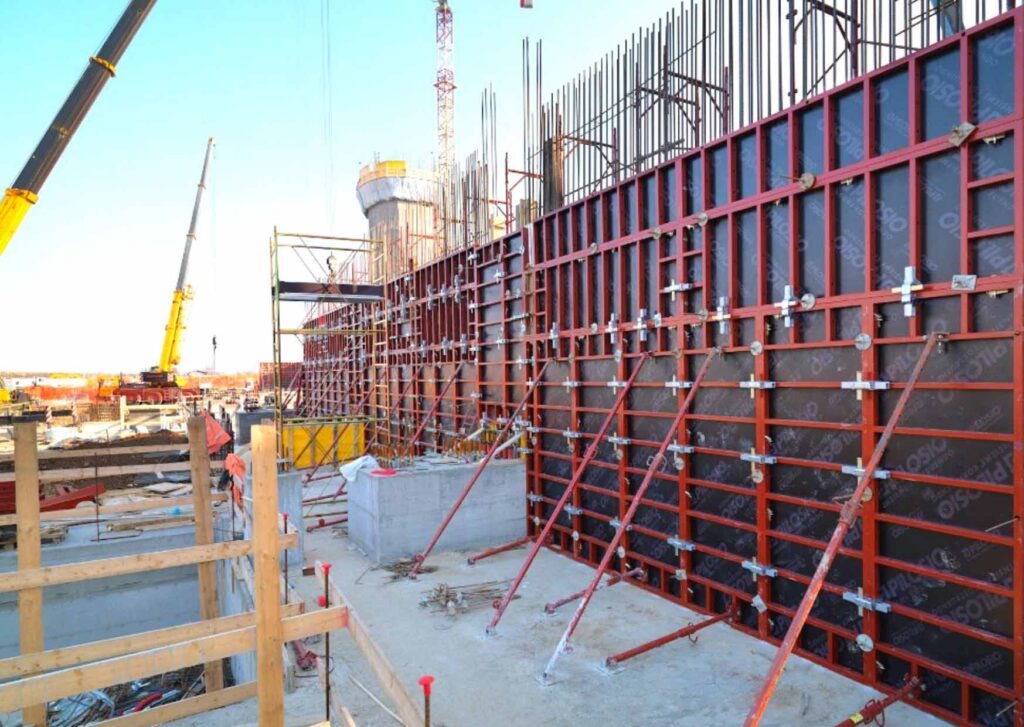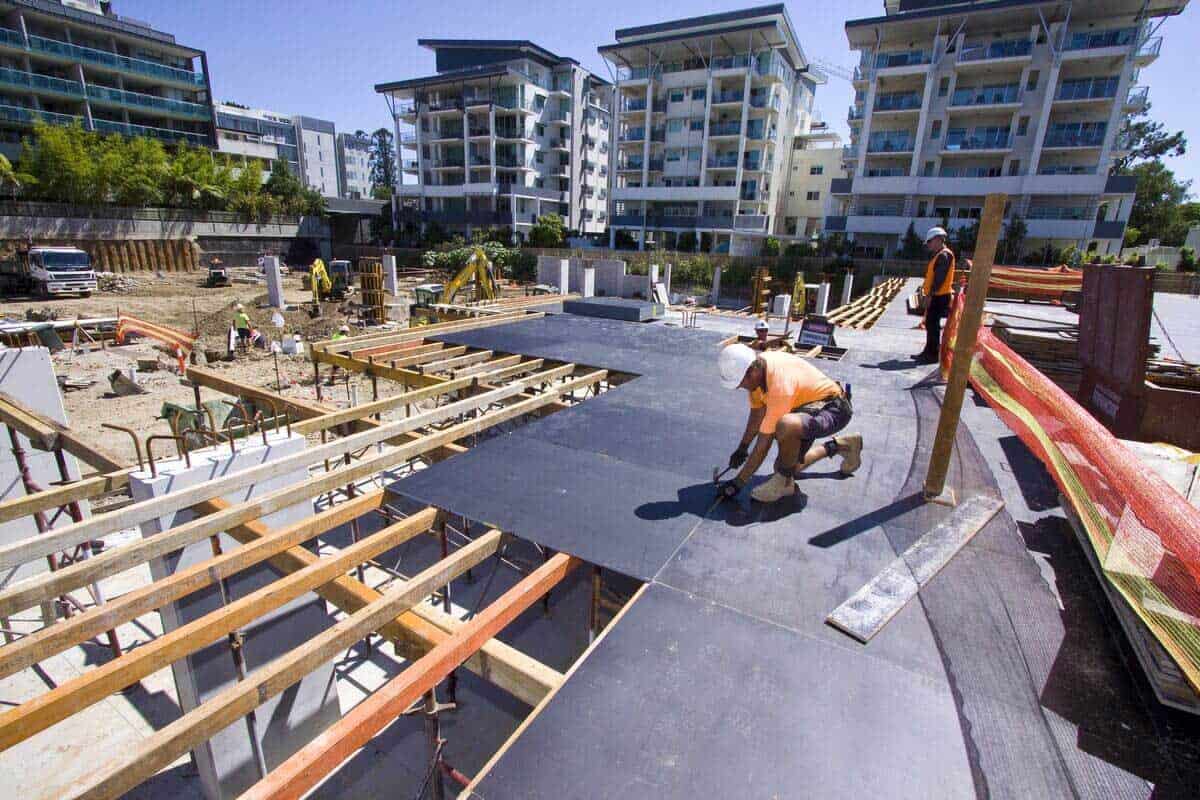Laminated Veneer Lumber (LVL) formwork is a popular choice for engineers due to its exceptional strength and durability. In this article, we will explore the technical specifications of LVL formwork and delve into its various aspects, design considerations, safety measures, and future trends. Let’s begin by understanding the basics of LVL formwork.
Understanding LVL Formwork
LVL formwork refers to the use of laminated veneer lumber, an engineered wood product, in construction projects. It is composed of thin layers of wood veneers that are bonded together with adhesives and then pressed under high heat and pressure. This process enhances the strength and structural integrity of the LVL timber formwork, making it ideal for supporting heavy loads.
LVL formwork is a popular choice in the construction industry due to its durability and versatility. Its ability to withstand heavy loads and provide a stable framework for concrete pouring makes it a valuable asset on job sites. Additionally, the smooth surface of LVL formwork panels results in a high-quality finish on concrete structures.
Definition and Basic Properties of LVL Formwork
LVL formwork is a temporary structure used to support freshly poured concrete until it gains sufficient strength to support itself. It provides a solid framework for shaping and molding concrete into desired shapes and sizes. The basic properties of LVL formwork include high strength, dimensional stability, and resistance to moisture and chemicals.
Furthermore, LVL formwork is known for its eco-friendly nature as it is made from sustainable wood sources. This makes it a preferred choice for environmentally conscious construction projects. The dimensional stability of LVL formwork ensures that it maintains its shape and form even under changing environmental conditions, reducing the risk of structural deformities. Learn more how LVL formwork enhancing efficiency and precision in building.
Key Components of LVL Formwork
The key components of LVL formwork include panels, beams, and props. These components work together to create a robust and versatile system that can be easily assembled and disassembled. The panels provide the formwork surface, while the beams and props provide the necessary support and stability.
Moreover, the adaptability of LVL formwork systems allows for customization to suit various project requirements. Builders and contractors can easily adjust the formwork to accommodate different shapes and sizes, making it a flexible solution for a wide range of construction needs. The lightweight nature of LVL formwork also contributes to ease of handling and transportation on construction sites, improving efficiency and productivity.
Technical Aspects of LVL Formwork
Now that we have a basic understanding of LVL formwork, let’s explore its technical aspects in detail.
LVL formwork is a versatile and reliable construction material that plays a crucial role in modern construction projects. Its innovative design and composition make it a preferred choice for contractors and builders looking for durability and efficiency in their formwork systems.
Material Composition and Strength
LVL formwork is typically made from softwood veneers, such as pine or spruce, which are bonded together with phenolic or melamine adhesives. This construction method ensures exceptional strength, enabling LVL formwork to withstand heavy loads without deformation or failure. The precise arrangement of these veneer layers contributes to the overall stability and robustness of the formwork, providing a reliable platform for concrete placement.

Load-Bearing Capacity
LVL formwork has a high load-bearing capacity, which allows it to support significant weight during the concrete pouring and curing process. This capacity is determined by the thickness and density of the veneer layers used in the construction of the LVL formwork system. The engineered nature of LVL formwork ensures uniform strength and performance across the entire surface, reducing the risk of structural issues during construction.
Durability and Lifespan
One of the key advantages of LVL formwork is its durability. It can withstand harsh conditions, including exposure to moisture and chemicals, without compromising its structural integrity. Additionally, LVL formwork has a long lifespan, making it a cost-effective choice for construction projects. The ability of LVL formwork to maintain its strength and shape over time minimizes the need for frequent replacements, saving both time and resources on the job site.
Design and Construction with LVL Formwork
When designing and constructing with LVL formwork, engineers need to consider various factors to ensure the success of their projects.
Laminated Veneer Lumber (LVL) formwork is a popular choice in the construction industry due to its strength, durability, and versatility. It is commonly used for forming concrete structures such as walls, slabs, beams, and columns. LVL formwork is known for its high load-carrying capacity and ability to provide a smooth and even surface finish to concrete elements.
Design Considerations for Engineers
Engineers must analyze the structural requirements and constraints of the project to determine the appropriate LVL formwork design. This involves assessing the loads, formwork layout, and required formwork accessories to ensure optimal performance and safety.
Additionally, engineers need to consider factors such as environmental conditions, concrete mix design, and formwork stripping requirements when designing with LVL formwork. Proper planning and attention to detail during the design phase are crucial to the overall success of the construction project.
Construction Techniques and Best Practices
Proper construction techniques are essential for the successful implementation of LVL formwork. Engineers must ensure that the formwork is assembled correctly, with adequate reinforcement and bracing to prevent movement or collapse during concrete pouring. Best practices, such as regular inspections and maintenance, should also be followed to extend the lifespan of the LVL formwork.
Furthermore, proper concrete placement and curing procedures are vital to achieving the desired strength and durability of the structure. Engineers should closely monitor the concrete pouring process to prevent issues such as honeycombing, segregation, or cold joints. Adhering to industry standards and guidelines for concrete construction will help ensure the quality and integrity of the final product.

Safety Measures and Compliance Standards
Ensuring the safety of construction workers and compliance with relevant standards is of utmost importance when using LVL formwork.
When it comes to construction projects, safety should always be the top priority. Laminated Veneer Lumber (LVL) formwork is a popular choice due to its strength and durability, but it is essential to follow strict safety measures to prevent accidents and injuries on the job site. Proper training on the handling and installation of LVL formwork is crucial to ensure that workers understand the potential risks and how to mitigate them effectively.
Safety Guidelines for LVL Formwork
Engineers must adhere to specific safety guidelines when working with LVL formwork. This includes providing adequate fall protection, maintaining a stable and secure working platform, and ensuring proper installation and usage of formwork accessories.
Additionally, regular safety inspections should be conducted to identify any potential hazards or defects in the formwork. It is essential to address these issues promptly to maintain a safe working environment for all construction personnel involved in the project.
Compliance with Engineering Standards
LVL formwork must meet specific engineering standards to ensure its structural integrity and performance. These standards may vary depending on the local regulations and codes. Engineers should verify that the LVL formwork used on their projects complies with these standards and undergoes regular inspections and testing.
Furthermore, compliance with engineering standards not only guarantees the safety of workers but also contributes to the overall quality and longevity of the construction project. By adhering to these standards, engineers can have confidence in the reliability and stability of the LVL formwork, ultimately leading to a successful and secure building structure.
Future Trends in LVL Formwork
LVL formwork continues to evolve with technological advancements and growing concerns for sustainability and environmental impact.
Technological Advancements and Innovations
Ongoing research and development efforts are focused on enhancing the performance and efficiency of LVL formwork. This includes the development of advanced bonding agents, innovative formwork systems, and the integration of smart technologies for monitoring and control.
One exciting technological advancement in LVL formwork is the use of 3D printing to create intricate and customized formwork designs. This cutting-edge technology allows for precise and complex formwork structures to be manufactured with ease, revolutionizing the construction industry.
Sustainability and Environmental Impact
As sustainability becomes a significant consideration in construction, LVL formwork offers an environmentally-friendly alternative to traditional formwork materials. LVL is derived from sustainably managed forests and can be recycled or repurposed at the end of its life cycle, reducing the impact on natural resources.
Moreover, the carbon sequestration potential of LVL formwork should not be overlooked. By using wood-based materials like LVL, which store carbon throughout their lifespan, construction projects can contribute to mitigating climate change by reducing greenhouse gas emissions.
In conclusion, LVL formwork has become a preferred choice for engineers due to its technical specifications, design flexibility, and long-lasting performance. Understanding the basic properties, technical aspects, and safety measures associated with LVL formwork is crucial for successful construction projects. With advancements in technology and the increasing focus on sustainability, the future of LVL formwork looks promising. By staying informed and adopting best practices, engineers can harness the full potential of LVL formwork for their projects.
More to read: Don’t know how to select a good Melbourne buyers agency?

